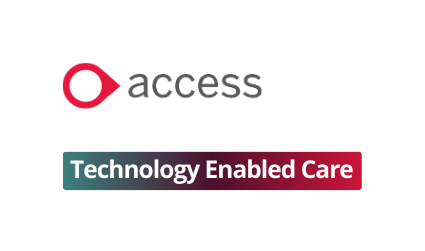
Prevention must be our top priority says Access TEC Specialist, Adrian Scaife

28 May 2024
The graph below from the Kings Fund paints a stark picture of Social Care. Demand for support and care from Social Services continues to rise, with 1.37 million people making new requests for help during the last year. At the same time, the number of older people receiving services has fallen by 44,000 (7.7%) since 2015/16. When increases in population size are taken into account, the fall is even starker. In 2015/16, 6.0% of people aged 65 and over were receiving long-term care but by 2022/23 this had fallen to 5.2%

Our likely knee jerk reaction is to suggest that these challenges would all disappear if we spent more money. I suggest it’s been our ability and willingness to keep spending more on care and health using the existing model that has, in part, got us into the current situation. Even if we could spend our way out today the longer term challenge is no easier. The Department of Social Care and Health projects that around 29% more adults aged 18 to 64 and 57% more adults aged 65 and over will require care in 2038 compared to 2018. Over this period, the total cost of care is projected to rise by 90% for adults aged 18 to 64, and 106% for adults aged 65 and over (assuming the existing care model). Even if we had the money, could we find enough people? I could go on! The point is that the current model of support, care and health at a macro level is effectively a 20th-century model of service delivery for a 21st-century environment and is not sustainable in its current form.
As Lord Bethell recently pointed out “We cannot continue to pour an increasing amount of money into more doctors, hospitals, and medicines in the hope that we can treat our way out of our health problems. Where will it end?... We need to look "upstream" and tackle the determinants of health. If we don't, we'll bankrupt the country.”
To para phrase an old saying we must move from getting increasing numbers of people out of the river once they have fallen in, to moving upstream to find out why they are falling in the first place. This is about developing new models of care and support, fit for the 21st century, that deliver better outcomes for people while at the same time reducing demand for support, care and health services over the longer term.
So what does this mean for the TEC sector?
To stretch the metaphor (possibly too far!), to date we have been enormously successful in ensuring that we help people out the river quickly by mitigating the consequences of crisis events such as falls or fires. We need to urgently change our focus to preventive care first to ensure significantly less people are falling in and instead living the gloriously ordinary lives that they aspire to.
Too many people are currently experiencing crisis events too often, reducing their quality of life, and their life expectancy, perpetuating health and social inequalities, let alone the wider effects on our society and the economy.
In my opinion, the TEC sector (both suppliers and service providers) has an unprecedented opportunity to be at the forefront of this significant change that will benefit the whole of society. It is uniquely positioned to provide the underlying technology and services that will be the catalyst for a transformation in the way support and care are provided. Truly Technology Enabled Care at scale.
I believe that many of the products and services required by service providers already exist and those that don’t are either on development roadmaps or will emerge in the next five years.
For reassurance and clarification- will this mean fewer digital alarm devices being used? I would suggest not as there will always be a need for a life-critical alarm service safety net. We have already seen that the number of alarm users has not kept pace with the growth in the older population.
In a recent House of Lords debateLord Patel said “A sustainable future for both NHS and social care is possible, and with it a healthier population that leads to increased life expectancy and decreased health inequalities. It needs a long-term funding commitment, including in capital funding, and strong primary and community care with a focus on prevention and health. It needs to be digitally driven, connected and tech enabled, and to have a clear plan with timelines for its introduction.”
While I entirely agree that a sustainable future is both possible and essential, I am not convinced that we should be waiting for another Government policy or funding announcement to kick start this urgent transformation.
The 2014 Care Act already empowers Local Authorities to provide or arrange services that help prevent people from developing needs for care and support or delay people deteriorating such that they would need ongoing care and support.
I believe we have an active choice of doing nothing or to make a start today, however small, on the prevention agenda.
We (both as organisations and individuals) should be talking in our communities about prevention, what it means and the benefits, how can we help today and what else might we be able, or need, to do in the future. How does hybrid, virtual, or even pre-care fit?
While our existing stakeholders in Social Care, Housing, and Health will be interested, we need to reach further, and importantly upstream to people earlier in their care journeys, and to groups that we perhaps have not engaged with before such as informal carers, families, care providers, charities, community, and faith groups.
Prevention is not going to be “owned” by a single organisation or a government department, it starts with people like you and me, a collaborative and co-productive community-based activity including a wide range of stakeholders empowered and connected by digital technologies.
Being connected by digital technologies can revolutionise your organisation’s digital transformation journey, transforming traditional reactive care models into more person centred, proactive and preventative ones.
There is so much that we can achieve today, so let’s make a start!






